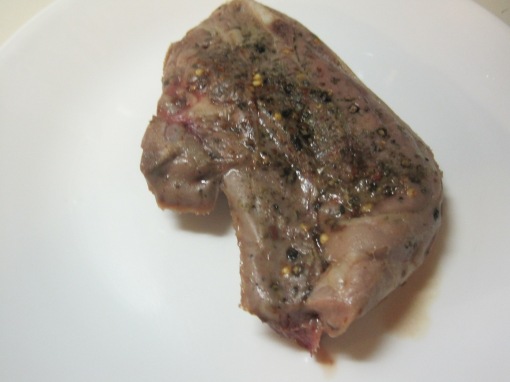Lamb shanks were a meat I picked up while picking up lamb chops. Dalia’s does a mean lamb shank, and I was looking for something straightforward to do with lamb, that didn’t involve a lamb steak style prep. Stefan Gourmet had a good looking lamb shank recipe, so I took his approach when trying to make this dish.
The meat itself came from Australia and was, to be plain, a little butchered. The pieces were nearly cut in two in the middle.
We coated the meat in olive oil, the leaves of fresh thyme, salt, a pepper blend, a light dusting of garlic and onion powder and sealed the meat in a bag.
This went into a sous vide pot and was cooked for 48 hours at 144 F. The smell of the meat after cooking was fantastic.
Though plans had changed in the two days of cooking. I still went ahead and recovered the lamb juices. Since solids will form with unheated sous vide juices, these were poured into a pot and heated till solids formed. These solids were then strained, using a collander and wet paper towels, and placed in a jar for later use.

Solid forming in the lamb juices as they heat. The brown layer on top is later strained off the juices.
The meat itself was very good, but very reminiscent of the kind of meats the Chinese favor. It’s as if the breakdown of all the connective tissue left it with a lot more gelatinous character. It also reminded me of meats that have been stewed for many hours, but without the water associated with that kind of treatment.
Because the meat had been nearly doubly cut, it never did hold up to much of any kind of post prep, falling apart easily. All that said, I’d do it again. Meats nearly cut in two shouldn’t be used as stand alone entrees, but perhaps as the source of meats for sandwiches, quick soups, or as a meat topping for a pasta dish.



















